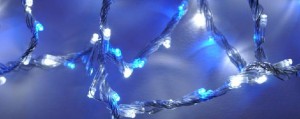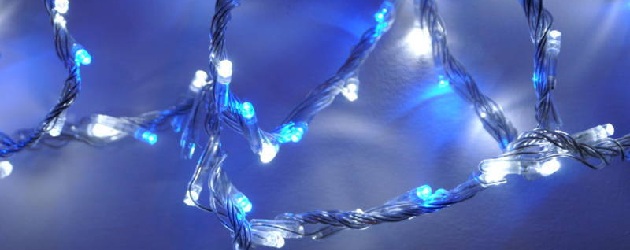Christmas is the most accident prone season of the year and Christmas decorations can be extremely flammable and often dangerous. However by following simple health and safety guidelines you can ensure that accidents are avoided with minimal effort (by Iain Miller).
 |
| [relatedPosts title=”Related Posts”] |
|
|
Over the festive period Christmas lights are bought and displayed in billions of households around the world. If Christmas lights are handled correctly and the appropriate safety advice is followed they can be an enjoyable addition to your household Christmas decorations. These guidelines are designed to ensure you have a pleasurable and safe experience with your Christmas lights.
Buying your Christmas lights
All Christmas lights commercially sold within the European Economic Area should have a mandatory European CE marking. CE markings have been a legal requirement since 1993 and demand that the product complies with the essential requirements of the applicable EC directives. This means that products with a CE marking have been accessed and successfully meet safety and health protection requirements. It is therefore essential to buy Christmas lights that carry this CE marking.
Low voltage Christmas lights should always be considered when purchasing your Christmas lights. Most light sets now run on 12 to 24 volts through a mains transformer. If using higher voltage lights, purchasing a residual-current device (RCD) Safety Adaptor can reduce the risk of electric shock by monitoring the power supply and detecting faults.
LED lights are an alternative option to Christmas light bulbs and can be supplied in both outdoor and indoor varieties. LED lights are encased in silicone so there are no glass bulbs to break and cause accidents. They also use very little electricity, have a longer shelf life and do not produce any heat, which makes them a much safer option to standard bulbs. Wherever possible you should consider low voltage or LED Christmas lights for your home as they are a reduced fire and safety hazard.
Christmas light safety checklist
- Check that all wires associated with your Christmas lights are double insulated and that there are no visible earth wires
- Check that wires are securely attached to the plug via a cord restraint and that the appropriate fuse is in place
- Check that the lights are fixed to a 3 amp fuse plug or to a mains transformer
- Examine all cables and bulbs for damage before every use and never attempt to alter the bulbs when they are switched on
- For optimal safety unplug the lights whilst performing any safety checks
- Never attempt to alter the wiring, purchase new lights according to your needs
- Never attempt to string different light sets together unless the lights are specifically designed for this purpose
Indoor Christmas lights usage checklist
- Always read and follow the product’s manufacturer instructions
- Ensure that cables are contained in a safe area where they cannot be damaged (for example, do not run cables under carpets or other materials where people could walk over and potential trip or damage the cable)
- If Christmas lights are specified for indoor use only use indoors as indoor lights are not waterproof and can be easily damaged by harsh temperatures and wind
- Keep lights away from flammable materials or decorations
- Always use sturdy stepladders when hanging lights and don’t attempt to reach higher than you can manage
- Never leave Christmas lights on when the room is unattended for an extended period of time (for example, overnight or when you leave the house completely)
- For optimal safety only have lights in areas that cannot be accessed or reached if young children or destructive pets live in the household
- Alternatively battery powered Christmas lights can be purchased and are perfect for table decorations or as bedroom lights
- Never use more than three sets of Christmas lights for a single plug adapter
Outdoor Christmas lights usage checklist
- Always read and follow the product’s manufacturer instructions
- IP44 lights are the safest option for outdoor lighting as they are highly waterproof and effectively protect the lights against wind and harsh temperatures
- Keep lights away from flammable materials or decorations
- Always use sturdy stepladders when hanging lights and don’t attempt to reach higher than you can manage
- Secure outdoor lights to trees and strong house walls to avoid wind damage
- Ensure the lights are efficiently secured to outside walls using cable hooks or ties instead of staples
- For safety and efficiently, use LED low voltage lights for outdoor lighting and consider RCD adaptors and fuse boxes to monitor for electrical faults
Storing your Christmas lights
- Attempt to store your lights in a cold, damp-free environment
- Store Christmas lights out of reach of children or pets, preferable in a cellar or loft
- Attempt to package up the lights in the same way that they were purchased
By following these instructions you can ensure you have a safe experience with your Christmas lights.





